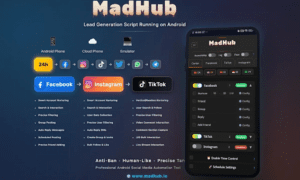1. Introduction: Why You Should Understand Cryptocurrency
Cryptocurrency is no longer a mystery or a niche tool for tech enthusiasts. It’s becoming a part of daily life for millions of people around the world. Whether you plan to invest, make payments, or just stay informed, understanding how crypto works is important.
Today, digital currencies are used to buy goods, pay for services, and even build long-term savings. Companies like Tesla, Microsoft, and PayPal already accept crypto. Many banks are also exploring blockchain-based solutions. So, crypto is no longer just the future — it’s happening now.
One of the biggest global shifts is the move towards decentralization. Instead of trusting large institutions, people are taking control of their money. They’re storing it in digital wallets, managing their own investments, and choosing platforms that are easy, smart, and secure.
Switzerland has become one of the most respected countries in the world for crypto innovation. It’s known for clear regulations, safety, and advanced blockchain infrastructure. In cities like Zug, also called the “Crypto Valley,” dozens of startups are changing the way we think about finance.
This is also where Beitrag Kaldorix comes into the picture. As a Swiss-based automated crypto investment platform, it helps everyday users enter the world of digital currencies without stress or confusion. Whether you want to trade, invest, or earn passively, Beitrag Kaldorix offers a secure and smart way to start.
In this article, we’ll break down how cryptocurrency works — in plain language. No technical background is needed. Just a clear roadmap of what crypto is, why it matters, and how you can use it safely and wisely.
2. What Is Cryptocurrency? The Basics
Cryptocurrency is a form of digital money. Unlike traditional cash or bank cards, it doesn’t exist in physical form. You can’t hold it in your hand, but you can use it to buy things, invest, and store value — all online.
What makes crypto special is how it works. It uses cryptography to protect each transaction. This means advanced math secures your funds and keeps your information private.
Unlike regular money, crypto isn’t controlled by banks or governments. Instead, it runs on something called a blockchain — a public database that records every transaction. Anyone can view the blockchain, but no one can easily change it. This makes the system transparent and hard to cheat.
There are thousands of cryptocurrencies today. But here are some of the most popular:
- Bitcoin (BTC): The first and most well-known cryptocurrency. It was created in 2009 and is often called “digital gold.”
- Ethereum (ETH): Known for smart contracts — self-executing programs that run on the blockchain. It’s more than money; it’s a full platform for apps.
- Solana (SOL): Fast and efficient, popular for decentralized apps and NFT projects.
Crypto is different from fiat currencies like the euro or Swiss franc. Fiat money is issued by governments and can be printed at any time. Cryptocurrency has a fixed or controlled supply, making it harder to inflate.
It’s also different from electronic money like PayPal balances or credit card transfers. These digital payments still depend on banks. With crypto, you can send money directly to anyone, anywhere — no middlemen needed.
Understanding the basics is the first step to using crypto smartly. In the next section, we’ll explore the technology that makes all this possible: the blockchain.
3. The Technology Behind It: Blockchain Explained
At the heart of every cryptocurrency is something called the blockchain. This is a special kind of database that stores information in a secure and transparent way. You can think of it as a digital notebook that records every transaction, but once a note is written, no one can erase or change it.
Let’s break it down:
- “Block” refers to a group of transactions.
- “Chain” means these blocks are linked together in order.
When someone sends or receives cryptocurrency, the transaction goes into a block. Once that block is full, it is added to the chain. This chain keeps growing, and everyone in the network can see it.
Why is this system safe? Because once a block is added, it cannot be changed without changing all the blocks after it — and that would take massive computer power. Also, most blockchains use a system called proof of work or proof of stake to verify each block, making fraud nearly impossible.
Types of Blockchain Networks
| Type | Description | Example |
| Public | Anyone can join and view transactions. | Bitcoin, Ethereum |
| Private | Only selected users can access the network. | Hyperledger, enterprise blockchains |
Popular Blockchains and Their Purpose
- Bitcoin: Used mainly for sending and storing value.
- Ethereum: Supports smart contracts and decentralized apps.
- Solana: Designed for fast, low-cost transactions.
- Tezos: Focuses on security and upgrades without forks.
Blockchains are not just for money. They’re also used in voting systems, digital identity, supply chains, and more. In Switzerland, many blockchain projects are supported by law and innovation hubs like Zug’s Crypto Valley.
One of the platforms built with blockchain efficiency in mind is Beitrag Kaldorix. It uses automation and smart strategies to help users invest in crypto with minimal effort and maximum transparency.
Next, let’s see how a cryptocurrency transaction actually works — from your wallet to the blockchain and beyond.
4. How Transactions Work in Cryptocurrency
Sending cryptocurrency is not much different from sending an email. But instead of a message, you’re sending digital money — and instead of an email address, you use a crypto wallet address.
Here’s how a typical crypto transaction works:
- You open your wallet. This can be a mobile app, hardware device, or online platform.
- You enter the receiver’s wallet address. This is a long string of letters and numbers.
- You choose the amount to send and confirm the transaction.
- The network checks the transaction to make sure everything is valid.
- The transaction is added to a block and recorded on the blockchain.
Each transaction is signed with your private key, which proves you are the true owner of the coins. This key is never shared. It’s stored safely in your wallet and should never be lost.
The person receiving your crypto sees it arrive in their wallet once the transaction is confirmed. Depending on the network, this might take from a few seconds to a few minutes.
Important Terms
- Public key: Like your bank account number. You share this to receive crypto.
- Private key: Like your PIN code. You never share this.
- Gas fee: A small fee paid to process the transaction. It helps keep the network running.
- Miner or validator: The computer or person who confirms the transaction and adds it to the blockchain.
Some networks, like Bitcoin, use miners with high-powered machines. Others, like Ethereum 2.0, use validators who lock up coins to help secure the network.
Platforms like Beitrag Kaldorix take care of the technical part for you. Their system sends and manages transactions automatically, so you can focus on strategy instead of details.
Now that you know how crypto moves from one wallet to another, let’s explore the different types of cryptocurrencies — and what they’re used for.
5. Types of Cryptocurrencies and Their Use Cases
Not all cryptocurrencies are the same. Each has its own purpose, design, and role in the crypto world. Understanding the differences can help you choose the right coins for investing or using.
Main Types of Cryptocurrencies
- Bitcoin (BTC) – The first and most famous crypto. It’s used mainly as a store of value, like digital gold. People often buy Bitcoin to hold long-term.
- Ethereum (ETH) – A smart contract platform. Developers use it to build decentralized apps (dApps), such as finance tools, games, and marketplaces.
- Stablecoins – These are linked to fiat currencies like the US dollar or Swiss franc. Examples include USDT and USDC. They offer stability and are used for payments and saving without volatility.
- Utility tokens – These give you access to services within a platform. For example, using a token to pay fees or unlock features.
- Governance tokens – These allow holders to vote on how a project is run. You get a say in updates or changes to the platform.
Popular Use Cases
People use cryptocurrencies in many different ways:
- Investing and trading – Buy and sell to earn profits as prices go up or down.
- Payments – Pay for goods and services online or in-store, especially with stablecoins.
- Saving and earning – Use staking and lending to earn interest over time.
- Access to services – Some platforms require you to hold their token to use features.
For example, Ethereum is used to run apps like Uniswap, a decentralized exchange, while Solana powers fast-moving NFT games.
Beitrag Kaldorix uses a smart strategy that combines different coins for automated portfolio growth. It selects tokens based on trends and opportunities — so you don’t have to choose or trade manually.
The world of crypto is wide. But before you buy coins, you need a place to store them. Let’s explore crypto wallets next.
6. Crypto Wallets: How to Store and Protect Your Coins
Just like a regular wallet holds your cash, a crypto wallet holds your cryptocurrencies. But instead of storing coins physically, it stores your private keys — the secret codes that give you access to your digital money.
There are different types of crypto wallets, and each has its pros and cons:
Main Types of Wallets
- Online wallets (web-based): Easy to use and accessible from anywhere. Great for beginners. Examples: MetaMask, Trust Wallet.
- Mobile wallets: Apps on your phone. Convenient for daily use and quick transactions.
- Desktop wallets: Installed on your computer. More control, but needs good security.
- Hardware wallets: Physical devices (like USB sticks). Very secure — perfect for long-term storage. Example: BitBox, a Swiss-made wallet.
- Paper wallets: Your keys printed on paper. No internet risk, but can be lost or damaged.
Custodial vs. Non-Custodial
- Custodial: A company stores your private keys for you. Easier, but less control. Common on exchanges.
- Non-custodial: You hold your own keys. More secure, but you must back up your info carefully.
Seed phrases are your backup. When you create a wallet, you’re given a list of 12–24 random words. Write them down and store them in a safe place. If you lose them, you lose your access forever.
Swiss wallet solutions like Cryptonow and BitBox are popular for their strong privacy and offline security features. They’re often used by long-term holders and institutional investors in Switzerland.
For users of Beitrag Kaldorix, the platform handles wallet integration automatically. You don’t need to worry about private keys or complex settings — the system securely manages everything in the background while giving you full transparency.
With your wallet set up, you’re ready to explore the real-world uses of crypto. Let’s see how people are using it today.
7. How People Use Cryptocurrency Today
Cryptocurrency is not just a trend — it’s being used every day around the world. From payments to investments, crypto has found its way into many areas of modern life.
Here are the most common uses:
- Investing: Many people buy and hold coins like Bitcoin or Ethereum, hoping their value will increase over time. This strategy is often called “HODLing.”
- Trading: More active users trade crypto daily or weekly to earn from price changes. They use exchanges and tools to buy low and sell high.
- Payments: Some businesses accept crypto for products and services. You can buy coffee, book a flight, or shop online using Bitcoin or stablecoins.
- Money transfers: Crypto makes it easy to send money abroad. Transactions are fast and often cheaper than banks or money transfer services.
- Staking and yield: You can earn passive income by locking your coins on certain platforms and getting rewards.
- Decentralized apps (DeFi, NFTs, games): People use crypto to interact with new types of applications — from art marketplaces to blockchain games.
Let’s look at two examples:
- A freelancer in Switzerland receives stablecoins instead of euros, avoiding delays and high fees.
- A gamer earns tokens in a play-to-earn game built on the Solana blockchain — then sells them for real money.
But managing all this can be complex. That’s where Beitrag Kaldorix helps. The platform automatically finds and applies smart crypto strategies. You don’t need to trade or analyze charts — the system takes care of it while you monitor the results. It’s ideal for those who want passive income without daily involvement.
Of course, crypto isn’t risk-free. Let’s take a closer look at the main challenges and how to manage them.
8. Risks and Challenges of Using Crypto
Cryptocurrency offers many benefits — but it also comes with certain risks. Being aware of them helps you make smarter decisions and avoid common mistakes.
Top Risks in the Crypto World
- Volatility: Prices can rise or fall quickly. One day Bitcoin is up 10%, the next it’s down 15%. This makes crypto exciting, but also risky for short-term investments.
- Loss of access: If you lose your private key or seed phrase, your crypto is gone forever. There is no “forgot password” option.
- Scams and fraud: Fake platforms, phishing emails, and pump-and-dump schemes are common. Always double-check before sending money.
- Regulation uncertainty: Laws around crypto differ by country and can change quickly. In some places, rules are still unclear or evolving.
Real example: In 2022, several major exchanges froze user withdrawals during market crashes. Those who relied only on centralized platforms couldn’t access their funds for days or weeks.
How to Reduce Your Risk
- Learn the basics before investing.
- Use cold storage or trusted wallets for large amounts.
- Diversify — don’t put all your money into one coin.
- Choose secure platforms with transparent operations.
Beitrag Kaldorix helps reduce risk by using proven automated strategies. The platform focuses on diversification and smart risk management, avoiding emotional trading mistakes. It also provides users with full control and visibility — no hidden processes or black boxes.
When used wisely, crypto can be a powerful tool. But like any financial product, it’s important to know the risks before you dive in.
In the next section, we’ll show you how to get started with crypto safely — even if you’re a complete beginner.
9. How to Start with Cryptocurrency Safely
If you’re new to crypto, it can feel confusing at first. But starting safely is easier than you think — especially if you follow a few basic steps.
Step-by-Step Guide for Beginners
- Learn the basics: Take time to understand what crypto is, how wallets work, and what risks to expect. You don’t need to be an expert — just know the core ideas.
- Choose a wallet: For beginners, mobile or online wallets are easy to use. If you plan to invest more money, consider a hardware wallet for better security.
- Pick a trusted platform: Use a regulated, transparent platform like Beitrag Kaldorix, which automates trading and investing based on tested strategies. This removes the guesswork and lowers the risk of beginner mistakes.
- Make your first deposit: Start small. You can invest the amount you’re comfortable losing — for example, the cost of a dinner out. This way you learn without big pressure.
- Set goals: Are you saving for the future? Earning side income? Decide how long you want to hold your investment, and don’t panic with short-term price swings.
- Stay secure: Never share your private keys or seed phrase. Use two-factor authentication. And always check that you’re on the official website before logging in.
Start Small, Think Long-Term
You don’t need to trade every day or chase the hottest coin. Platforms like Beitrag Kaldorix help you invest without stress. Their system handles everything behind the scenes, from market analysis to smart rebalancing — while you focus on your daily life.
With a secure setup and a clear plan, you’re ready to join the crypto world. In the final section, we’ll look at what the future holds for cryptocurrency and why Switzerland is leading the way.
10. Conclusion: The Future of Crypto in Everyday Life
Cryptocurrency is no longer just an idea — it’s becoming part of real life. More people, companies, and governments are starting to use digital assets for payments, savings, and innovation.
Switzerland is leading the way. With clear laws and strong infrastructure, it’s home to many blockchain companies and smart financial solutions. Cities like Zug, known as “Crypto Valley,” are shaping how the world uses crypto.
For everyday users, platforms like Beitrag Kaldorix make it easier to join this change. With automated strategies, trusted technology, and Swiss reliability, anyone can invest and trade crypto — safely and simply.
You don’t need to be a tech expert or a finance pro. You just need to start — with the right tools, the right mindset, and a little curiosity.
The future is digital. And it starts now.



































